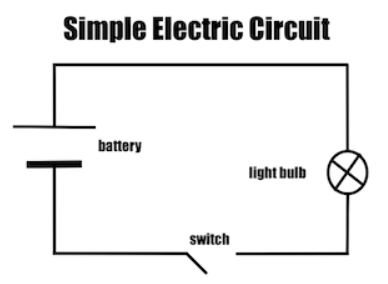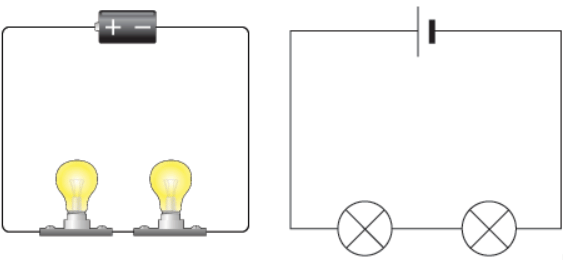Class 7 Exam > Class 7 Notes > Year 7 Physics (Cambridge) > Circuit diagrams
Circuit diagrams | Year 7 Physics (Cambridge) - Class 7 PDF Download
Introduction to Circuit Symbols
- Symbols represent electrical components in circuit diagrams.
- Examples: Battery symbol (1.5V cell), bulb symbol, switch symbols (on/off).
Drawing Circuit Diagrams
- Use symbols to create circuit diagrams.
- Connect components with straight lines to show wiring.
- Example: Drawing a simple circuit with a battery, bulb, and switch.

Direction of Electric Current
- Electric current flows from positive to negative terminal of the battery.
- Arrowheads in circuit diagrams indicate current direction.
- Example: Showing current flow in a basic circuit.
Effect of Switches in Circuits
- Switch symbols indicate circuit on/off status.
- Circuit diagram variations: on (current flows) and off (no current flow).
- Example: Drawing and comparing circuit diagrams with switch positions.
Functionality of Bulbs in Circuits
- Bulbs glow due to electric current passing through filament.
- Breakage of filament disrupts circuit, preventing bulb from glowing.
- Example: Explaining how a broken filament affects bulb operation.

Conclusion
- Understanding basic circuit components and their symbols.
- Recognizing the role of switches, bulbs, and batteries in completing circuits.
Question for Circuit diagramsTry yourself: Which symbol in a circuit diagram represents the flow of electric current?View Solution
The document Circuit diagrams | Year 7 Physics (Cambridge) - Class 7 is a part of the Class 7 Course Year 7 Physics (Cambridge).
All you need of Class 7 at this link: Class 7
|
14 videos|31 docs|9 tests
|
FAQs on Circuit diagrams - Year 7 Physics (Cambridge) - Class 7
| 1. What is the purpose of drawing electrical circuit diagrams? |  |
Ans. Electrical circuit diagrams are used to visually represent the components and connections in an electrical circuit, helping to understand how the circuit works and aiding in troubleshooting and design.
| 2. What are the common symbols used in circuit diagrams? |  |
Ans. Common symbols used in circuit diagrams include those for batteries, resistors, capacitors, switches, and various types of wires and connections.
| 3. How do you properly draw a circuit diagram? |  |
Ans. To draw a circuit diagram, start by sketching the components and connections using the appropriate symbols. Make sure to label components and indicate the direction of current flow.
| 4. Why is it important to follow standard conventions when drawing circuit diagrams? |  |
Ans. Following standard conventions, such as using specific symbols and aligning components in a certain way, helps ensure that the circuit diagram is easily understandable to others and consistent across different diagrams.
| 5. Can circuit diagrams be used for both simple and complex circuits? |  |
Ans. Yes, circuit diagrams can be used for both simple circuits with just a few components as well as complex circuits with multiple components and connections. They provide a clear and concise way to represent any type of electrical circuit.
Related Searches





















